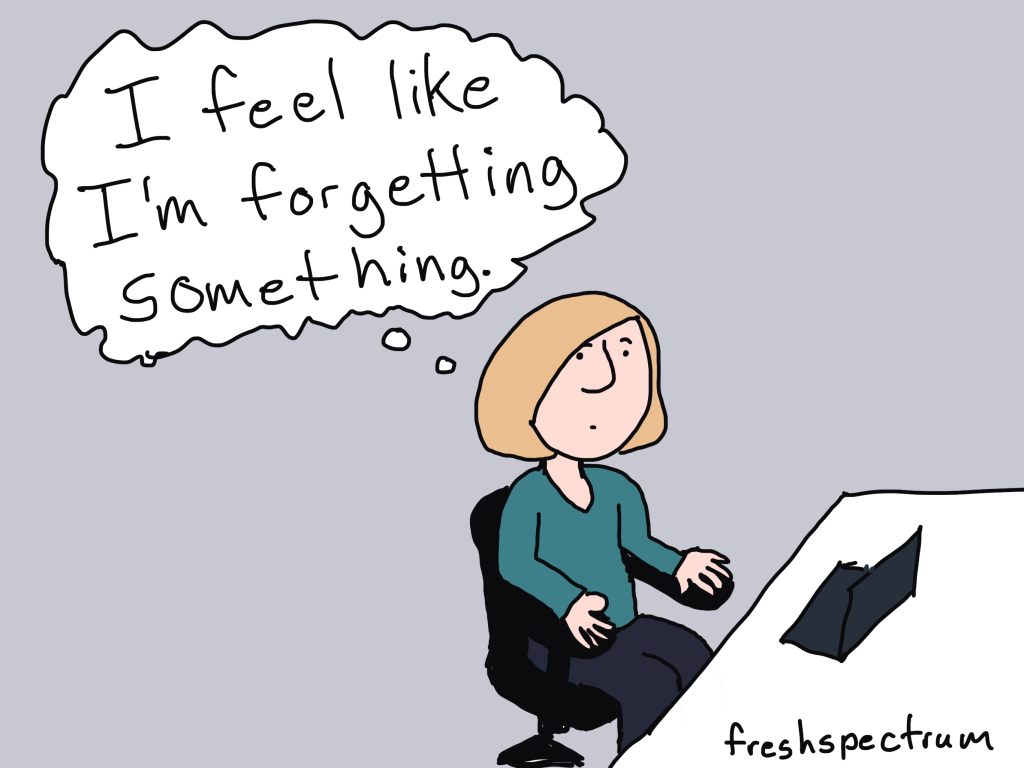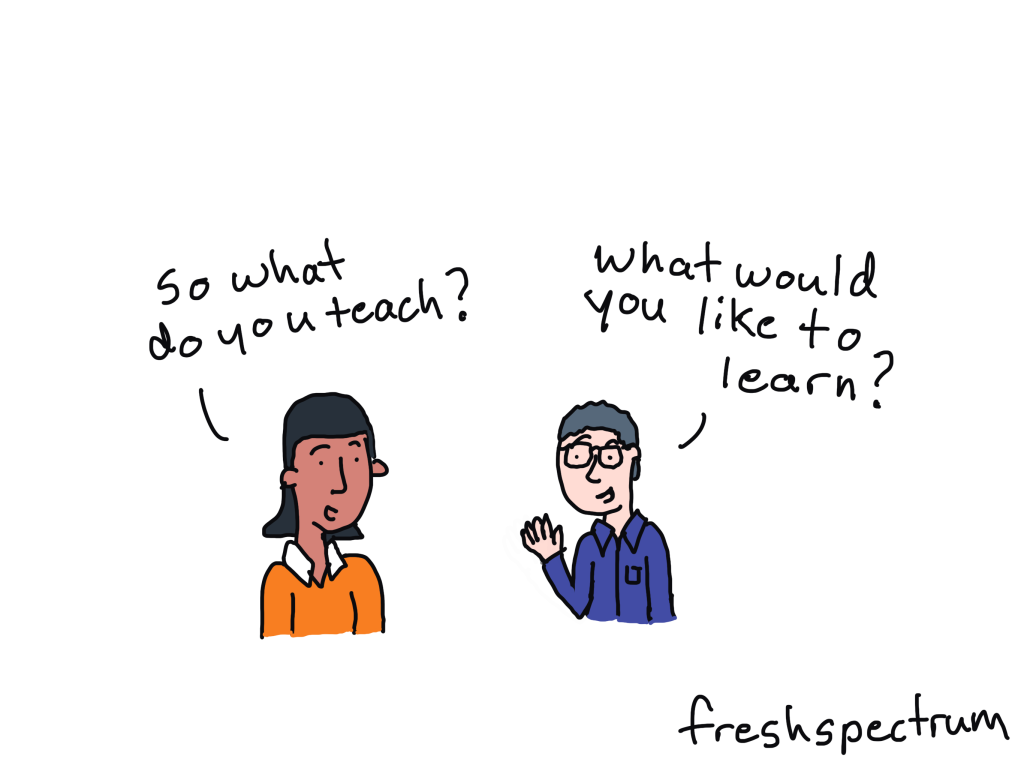This is an Eval Central archive copy, find the original at freshspectrum.com.
What was that thing…
I believe it was important.
It had something to do with something we didn’t know…
I remember being really focused on it.
But at some point our conversation switched. Then all of a sudden we weren’t talking about it anymore. It was still there, in the background somewhere, but felt less important somehow.
Now it was all about activities, outputs, and outcomes. We had goals, and things that we were doing to get to those goals.
We started tracking numbers, which seemed important because we could make those numbers go up or down based on the things that we were doing.
Then days, months, or years went by and suddenly we were ready to write a report.
In this report we were going to put in all the lessons we learned. We were going to describe those methods, outputs, and outcomes. All that data we collected, we would put those into nice little charts and graphs.
People were really going to love this report.
Now we just need a story to put everything into perspective.
But I can’t help but feel like we’re forgetting something.

Solutions don’t make good stories.
I was going to make this the title because it’s true.
But it’s also a solution. So leading off a blog post about how solutions don’t make good stories felt a little ironic. Like ten thousand spoons when all you need is a knife.
If it’s not abundantly clear, the thing we were missing above was the question (or questions) that started everything.
Questions and problems are always the engaging things that spawn projects and drive people forward. It’s why all the good stories don’t usually begin until there is some kind of conflict, problem, challenge, or struggle.
If you want your report to tell a story, don’t start with methods or an outline. Start with the question that started everything. The one that you focused on so much at the beginning of your project that you now take for granted.
While people might search for answers, they start their search with questions.
What are yours?
I built my information design academy out of questions.
I was reflecting on a conversation I had with one of my academy members.
It was the kind of conversation I have a lot with the members of the academy. The one where I try to figure out why people join the thing that I offer. What are they hoping to get out of a virtual information design academy?
It’s always felt like I’m doing something wrong. That the burden of coming up with the content I teach shouldn’t fall onto their shoulders.
But after that particular conversation I had a new perspective.
Ever since I first started teaching online (with the original DiY Data Design back in 2015) I had this idea that I would create a thing and continuously ask the people who joined that thing what they were struggling with. What problems did they have that I could solve?
And over time I learned lots about the challenges and struggles of data people in a modern digital world. A world that requires us to think more creatively, design visually, and tell better stories if we want to have any chance of someone else experiencing our work and learning from our ideas.
I expected that one day I would learn enough to know specifically what I offered.
But my perspective now is different. Because the world keeps changing, and so do the questions.
The tools I used most five years ago are not the tools I mostly use today. And I bet they’ll keep changing.
My workshops have never been about providing solutions. They’ve been about answering questions.
So why fight it.

You are all brilliant.
And here is the other truth.
The people who join my information design academy (as well as the people who follow this blog) are amazing. I am reminded about this again and again and again through my interactions with many of you.
So why not just accept that I don’t have to build this academy alone. Every single member brings experiences, challenges, and solutions that can help us all grow. Why even pretend like I know it all, when that’s not what anybody really needs.
My bizarre information design academy pitch to you.
- I don’t know what I’ll be teaching in a year, or even next month.
- I will likely ask you, again and again, what you are working on, struggling with, or interested in learning.
- I don’t have a sequential course designed to teach you a list of specific things based on a set of learning objectives (although I am building one I’m calling my baby steps course).
- What I do have is a strong desire to help you be the best information designer you can be.
- If you have a question I can’t help you answer, I won’t be able to let it go until I do.
- I meet live weekly, now with a couple of time slots to make scheduling easier for members in different time zones.
- I offer an included 1 on 1 call to every member for every quarter, because there is nothing like talking one on one.
- I know some people join these things and never attend, so I create emails and other super low barrier connection tools so that no matter what, they can get some value out of the academy.
- If someone is on the other side of the globe and wants to attend my sessions, I will add times late at night or early in the morning to ensure that they can.
- I help data people become better designers, storytellers, and communicators. And I know that members are seeing positive results, like better jobs, promotions, and increased creative confidence.
- And even though I’ve been doing this current iteration of the workshop for almost a year and half with only a small group, people still show up week after week after week.
So if any of that sounds good to you, and you want someone committed to helping you grow your information design skills then click here to learn more about the academy.